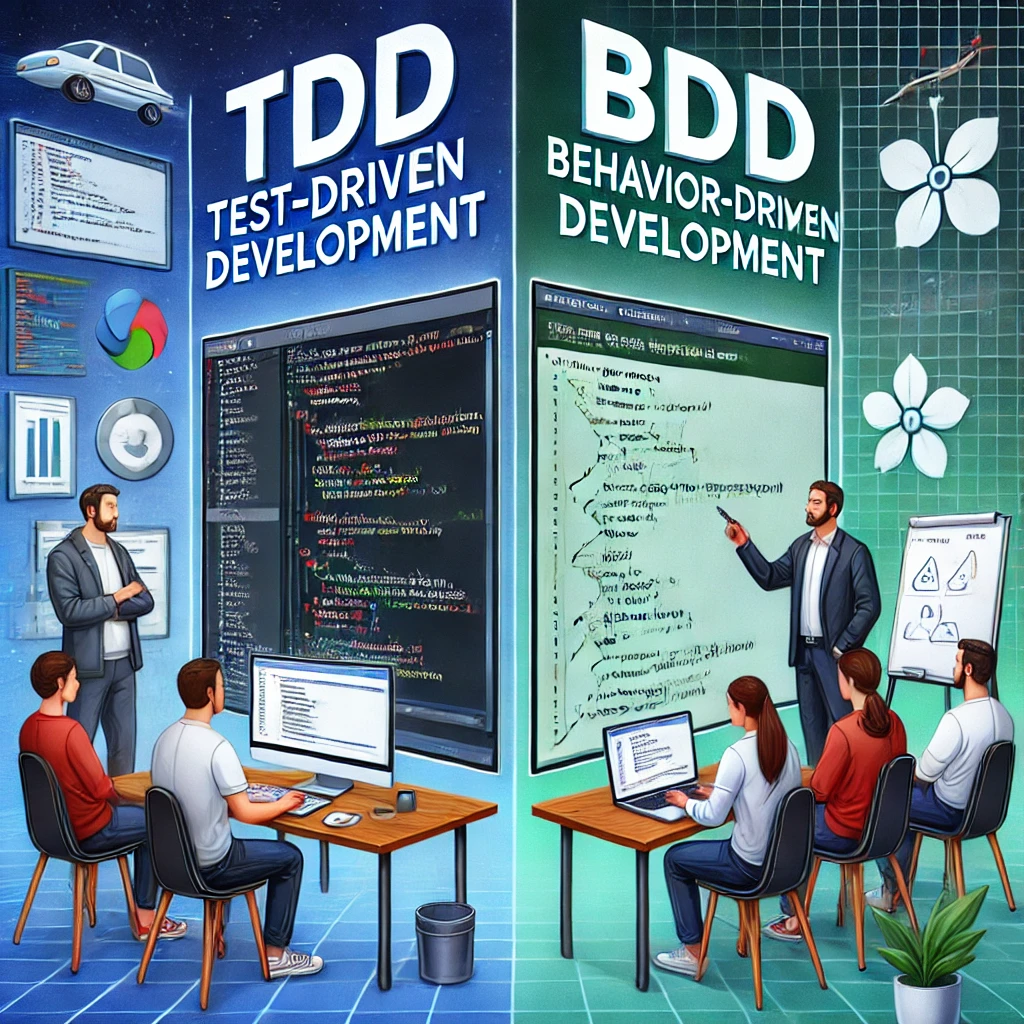TDD vs BDD: Choosing The Right Approach for Quality Software

Software development is a journey toward precision and reliability. Among modern testing paradigms,Test-Driven Development (TDD) and Behavior Driven Development (BDD) stand out for their ability to guide development while enhancing quality. While TDD focuses on writing tests before code, BDD bridges communication gaps between technical and non technical stakeholders by describing expected behavior. Let’s explore how these approaches differ, their advantages, and when to use them.
What is Test-Driven Development(TDD)
TDD is software development process where test are written before the actual implementation code. It emphasizes writing small, focused unit test and ensuring that code satisfies these tests.
How TDD works:
- Write a failing Test: Define a test that captures the desired functionality before writing any code.
- Write Minimal Code to pass the Test. Implement is just enough functionality to make the test pass.
- Refactor the code: Clean up the implementation for maintainability without breaking the test.
Benefits of TDD:
- Early Bug Detection: Bugs are identified early in the development cycle.
- Improved Code Quality: Code becomes modular, testable, and aligns with specifications.
- Regression Testing: TDD provides a safety net for future code changes.
- Increased Confidence: Developers gin assurance that their code works as intended.
Challenges of TDD:
- Time consuming, especially for teams unfamiliar with the process.
- Limited in scope to unit testing, leaving integration and system level test for other approaches.
Example of TDD:
Here’s a basic example of using TDD for an addition function:
#Test case
def test_addition():
result = add(2,3)
assert result ==5
#Minimal implementation to pass the test
def add(a, b):
return a + b
What is Behaviour Driven Development (BDD)
BDD extends TDD by focusing on behavioral specifications written in natural languages. This approach promotes collaboration between developers, testers and stakeholders, ensuring the software meets user expectations.
How BDD works:
- Define Behavior in Plain Language. Using tools to write scenarios in a Given-When-Then format.
- Automate Scenarios: Link each step to code implementation using BDD tools.
- Collaborate with stakeholders: Define behavior collaboratively, ensuring shared understanding.
Benefits of BDD:
Enhanced collaboration: Encourages communication between technical and non- technical teams.
User Focused: Scenarios focus on how the software should behave for end users.
Readable Tests: Non Technical stakeholders can understand and contribute to test scenarios.
Challenges of BDD:
Requires commitment from all team members. to work collaboratively.
Writing meaningful scenarios can be time consuming.
Example of BDD:
Here’s an example of using BDD for a login feature:
Scenario 1 : Successful login
Given the user is on the login page
When the user enters valid credentials
Then the user should be redirected to the dashboard.
Scenario 2: Login Failure
Given the user is on the login page
When the user enters invalid credentials
Then an error message should be displayed
TDD vs BDD : Key Differences:
| Aspect | TDD | BDD |
| Focus | Code correctness through unit test | Expected behavior from a user’s perspective |
| Audience | Developers | Developers, Testers, Business Analysts, and Stakeholders |
| Syntax | Programming language – specific | Natural languages |
| Tools | Unit, Nunit, PyTest | Selenium, Behave, SpecFlow |
| Test Granularity | Unit Tests | Integration and acceptance tests |
| Collaboration | Focused on Developers | Encourages collaboration between technical and non- technical teams |
When to use TDD?
Developing core logic or backend systems.
Testing critical functionality requiring precision.
Working on small, well defined components.
When to use BDD?
Collaborating with stakeholders to define expected behavior.
Testing user facing features or complex flows.
Performing integration testing in Agile environments.
How TDD and BDD Complement Each Other:
TDD and BDD are not mutually exclusive, they can work together to provide comprehensive test coverage:
. TDD ensures internal correctness at the unit level.
. BDD validates behavior and user interactions at a higher level.
Together, they enable teams to shift left in testing, reduce defects early, and improve overall software quality.
Conclusion:
Both TDD and BDD have their strengths and cater to different aspects of the software development lifecycle. While TDD focus on internal code correctness, BDD ensures the application behaves as expected for users. Combining these approaches enables teams to deliver robust and user- centric software.
Which testing paradigm do you prefer- TDD or BDD? let me know your thoughts in the comments or connect with me to discuss best practices in software testing!

